Posts in category Background
And the research goes on!
A couple of readers have asked about whether research into different aspects of the Delft School will still be possible in the future, and the answer is yes, of course. We have had volunteers scanning the fragile papers and notebooks for years and, thanks also to a group of Delft students last summer, about half the papers have been scanned. Eventually, the rest of the papers will also be scanned and it will be possible to research everything from the scans without having to handle the (sometimes very fragile) original papers.
They will be in the best possible place – a purpose-built archive with professional archivists.
Museum and Archive Updates
This has been a good week for the Collection. Thanks to a generous grant from the Prins Bernhard Cultuurfonds, we have been able to get our large collection of photographs professionally digitized, and on Monday the project was completed. The photos and their image files all came home.
Before travel became convenient and relatively fast, it was common to exchange photographs with colleagues, some of which can be seen over the Professor’s desk in the Beijerinck Museum. We have a number of such pictures, ranging from the famous (eg Winogradsky and Waxman) to staff, students and Beijerinck’s family, among other subjects. The photographs over the desk change, depending on who is coming to visit us. The collection also holds photographs of equipment, the labs at various dates, students and staff, as well as international visitors and microorganisms. Now that the photograph collection has been digitized, it will be catalogued in the University’s online catalogue.
None of this this would have been possible without the support of the Prins Bernhard Cultuurfonds, and we are very grateful to them.
On a sadder note, the building that the collection currently calls home has been sold, and we should be moving in the second half of next year. I will, of course, provide more details when I have them.
To end with something exciting, among recent donations to the collection was a set of exercise books found during a family house clearance. In these days of printed lecture notes, it is frustrating that such things did not exist in the late 19th/early 20th centuries so that we only know Beijerinck’s work from his publications. It was therefore very exciting to find that these books contained notes made by a student (the grandfather of the donor) during the Professor’s lectures. They were immediately scanned by a museum assistant, and then stored in our fire-proof safe. The current virus-related lockdown has given me time to look through them and I am very excited. The notes are not only beautifully illustrated and legibly handwritten, they are very detailed. At last we can find out what Professor Beijerinck told his students!
Presenting historical microscopes
Now that we’ve finished unpacking and sorting the collection, and the cataloging is well under way, the next priority is to improve the way that it is presented to the public. In this context, “public” can mean anyone from an international group of Professors on a visit to the Netherlands to members of the general public who visit the Science Centre at the weekend. In anything that we do, we must reach a happy balance between too much or too little explanation, without cluttering up any displays.
We also have the interesting problem of several boxes (labelled “microscope parts”) of mysterious lenses from unknown makers and other items. Fortunately, we have now teamed up with the Dutch Foundation for Historical Microscopy (here: http://stichtinghistorischemicroscopie.nl/en/) to try and solve the mysteries.
Some of the stars of our Brendel flower model and microscope collections can now be seen in display cases in the public areas of the Centre, but we have much more material than we can display. Some of the brown wooden boxes contain equipment such as microtomes, microforges and densitometers, so it was a useful exercise to investigate them all.
For good cataloging as well as publicity, everything needed to be well photographed. Jan Sluijter, the professional photographer who also worked on the Science Centre’s Minerals Collection (which goes back to the middle of the 19th century), therefore spent a fair amount of the winter/spring here.
We decided that we did not want to try and restore any items to factory perfection, but to leave the evidence of their long working lives. Some microscopes had obviously only had one careful owner (to borrow from car salesmen), others had been used by hundres of students in practicals. In addition, Jan photographed everything on both black and white backgrounds and made short film clips showing each item rotating on a turntable. It’s amazing how much difference the colour of the background makes, as can be seen in the two photos of the same Carl Zeiss Jena “jug handled” microscope with fitted camera lucida, below.
Jan’s now experimenting with different ways of showing representativeparts of the collection (see the Leitz and Bleeker microscopes, below). I still can’t decide whether I prefer the white or black backgrounds, but I think that the black is winning!
The parting of the ways…
At the end of March 1958, two years after Kluyver’s death, the Laboratory for Microbiology moved out of the building where he and Beijerinck had worked. Kluyver had been heavily involved in the design and planning of the new building, but it was his successor, Torsten Wikén, who took possession.
- Kluyver memorial
- Last day at the old lab, Prof Wiken central with a cigar
- Delft School memorial on old lab, Kanaalweg
The new laboratory was attached to the new Department of Biochemistry, the Department of Applied Botany previously erected for Van Iterson and the associated Botanic Garden dedicated to applied botany.
- The new Microbiology Laboratory in 1958
- The Beijerinck ceiling in the entrance to the Laboratory for Microbiology, 1958
Professor Wikén’s new office was given new furniture, and the contents of the office used by Beijerinck and Kluyver were stored in a purpose-built room in the microbiology attic. Since the 1980s, this collection has gradually been organised and merged with similar material left by Van Iterson when he retired and a few related donations, giving us what is known today as the Delft School of Microbiology Archives and the Museum known as the “Kamer van Beijerinck” (Beijerinck’s office). None of it would have been possible without the hard work of a legion of volunteers who have sorted and researched different areas of the collection.
The collection has attracted visitors ranging from individual researchers from as far afield as the USA and Japan to biotechnology students in their first year with their parents and visitors from schools. It’s provided material for TV programmes, exhibitions, publications and postage stamps as well as a couple of PhD theses… Visitors to the Department of Biotechnology have frequently been brought to see the collection during their visits, as have participants in some of the Delft Advanced Courses.
All good things eventually come to an end, and it is finally time for the Archive-Museum and the Department of Biotechnology to part company. Biotechnology is moving to a brand new Faculty building on the outskirts of Delft, uniting with other Faculty Departments. The Archive-Museum is moving around the corner to the old Department of Mining building, now the Delft Science Centre where the collection will occupy second floor rooms over the main entrance, next door to the minerals collection of the Department of Mining.
- Artist's impression of the new Faculty building
- Delft Science Centre with new Kamer van Beijerinck, 2nd floor with balcony
Regular readers of this blog will know that digitisation and cataloguing of the collection has been an on-going process and we’ve frequently been surprised as volunteers have found manuscripts and odd equipment as they’ve catalogued the contents of boxes. As we prepare for the move this is still true, and readers will no doubt be hearing about some of our more unusual discoveries (e.g. the papers relating to the unmasking of a cold war spy in the Department) in later posts.
Saying farewell to the Julianalaan will be sad in some ways (most of my scientific career was spent there), but our new rooms will be better lit and considerably less dusty. The Museum will be more accessible as it will no longer be necessary to walk through an active biotechnological laboratory to reach it. Last and not least, the move is giving us a chance to sort the document collection more logically, something that researchers who’ve visited us in search of specific documents will appreciate!
Educational wall charts – where are they now?
During the second half of the 19th century and the early years of the 20th, a number of companies produced wall charts as teaching aids. The theme and quality varied enormously, but most of the ones intended for bioscience education are not only very detailed, but generally beautiful in their own right. They were sold singly, or by subscription. Subscribers were sent the charts as they became available (often 1-2 per year), together with explanatory books.
Delft’s collection includes several complete series, including those by Kny, Dodel-Port and the series known as the Tabulae Botanicae (often attributed to “Blakeslee et al”, but most of the posters are signed by R. Erlich). However, we also have a number of incomplete series which might be represented by a single example, or a few posters. Some complete series are available elsewhere. For example, the conifers chart shown here is number 16 of 50 by Albert Peter – a complete series is held by the University of Bourgogne. However, many seem to have been forgotten.
With the help of collections around the world, it has recently been possible to assemble an electronic complete series of Pfurscheller’s zoological charts (here represented by the fly). Representatives from other partial series are shown here:
The Mycorhiza chart is number 10 from “Pflanzenphysiolgische Wandtafeln” by Frank & Tschirch (we have 1-10 of 60), most of the series is held by the University of Utrecht, among others.
The sweetcorn is number 3 in series C of a set for general biology by Haecker & Mülberger. Series A and B are both currently known by single examples, and Delft currently has 1-4 of series C, the size of the complete set is unknown.
The flowers come from a set by O.W. Thome (Delft has numbers 15 & 23).
The microorganisms come from a series by W. Henneberg about microorganisms with positive or negative impacts on the fermentation industry. This is number 6, vinegar fermentation. Delft has 8 of an unknown number.
The Delft School of Microbiology Archives
The “Delft School of Microbiology” is based on the work of our first three biological Professors – Beijerinck, van Iterson and Kluyver. The Archive is a collection of their papers, teaching aids, furniture and other materials and functions as a small museum in the Department of Biotechnology.
At the moment, the collection is being digitised and catalogued. This blog will report on some of the interesting and sometimes unexpected things to be found in the collection.
We’ll also cast an occaisional glance at our honorary member, the original Delft microscopist and microbiologist, Antonie van Leeuwenhoek.




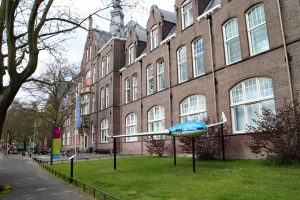
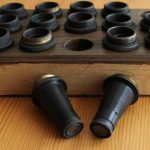
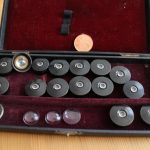
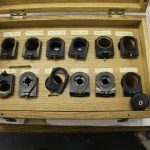

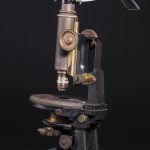
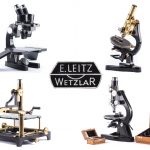
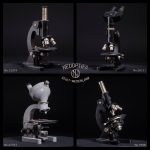


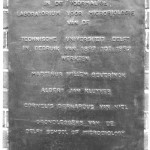
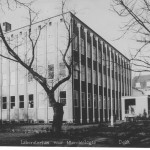
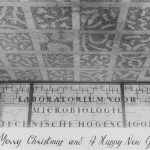
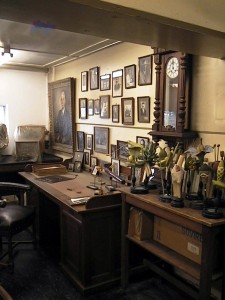

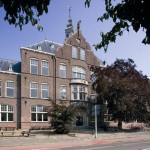
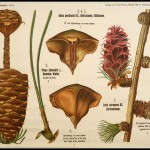
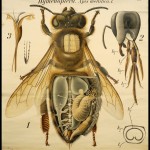
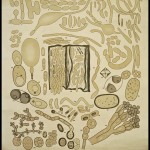
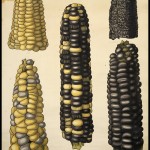

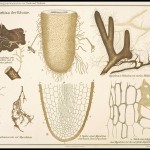
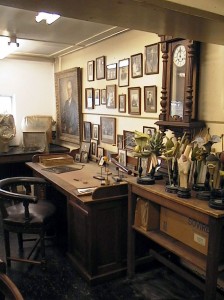
Recent Comments